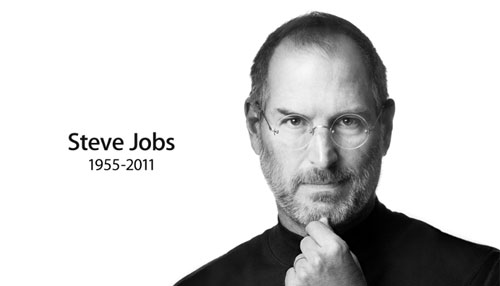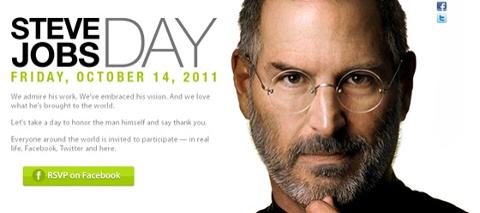Yesterday was a sad day for the technology world, indeed for the world in general. We lost one of our great innovators, a man who invented a lot of gadgets and who was responsible for making our lives easier: Steve Jobs. Steve Jobs was born in 1955 in San Francisco and adopted by an Armenian family from Mountain View, Calif. As a normal kid, he attended Cupertino Junior High and Homestead High School. One summer he was hired by Hewlett-Packard and there met his co-founder of Apple, Steve Wozniak. In 1972, Steve went to Reed College in Portland, Ore., but dropped out only after one semester. He returned to California. Atari hired Jobs and Wozniak to create a circuit board for a game called Breakout. Jobs told Wozniak they are going to receive $700 (instead the actual $5,000 fee). Wozniak indeed ended up with $350. In 1976, Jobs and Wozniak founded Apple Computer, which 35 years later would become the most valuable company in the world. That year, Jobs announced its first product - a desktop computer called Apple I. One year later came the Apple II, which sold 6 million units. The Apple III was released in May 1980, but was discontinued by April 1984 for serious stability issues. In 1983, Jobs recruited John Sculley from Pepsi for Apple's CEO position. In January 1984, Apple announced the Macintosh through a commercial directed by motion picture director Ridley Scott during Superbowl XVIII. It was the first widely distributed computer with a graphical user interface and a mouse. At the end of 1984, due to bad sales, Jobs relations with John Sculley deteriorated and in May 1985 Steve Jobs was fired by his own company. During his commencement address at Stanford in 2005, he recalled:
I didn’t see it then, but it turned out that getting fired from Apple was the best thing that could have ever have happened to me. The heaviness of being successful was replaced by the lightness of being a beginner again, less sure about everything. It freed me to enter one of the most creative periods of my life.
Being out from Apple didn't stop Jobs from continuing to innovate. In 1985 he founded NeXT, and in 1990 released two versions of the NeXTcube personal computer. The second version was used by Tim Berners-Lee to create the world's first Web server. In 1986, Jobs bought The Graphics Group -- which he later renamed Pixar -- from Lucasfilm for $10 million. Pixar went onto create animated blockbusters like Toy Story, Finding Nemo, Cars, Ratatouille, Wall-E and Up. He sold Pixar to Disney in January 2006 for $7.4 billion. In 1996, in a surprise move, Apple acquired NeXT for $429 million and Jobs returned to his CEO position. A year later, he announced during Macworld Expo 1997 that Microsoft would invest $150 million in Apple and develop several versions of Office for the Mac. In 1998, Jobs unveiled the first iMac, a personal computer that featured floppy disk and serial ports. It was another wise move made by Apple -- it earned $414 million the same year. Then came 2001, a landmark year for Apple: Apart from announcing OS X, which later proved pointed to the future of computing, Jobs introduced the iPod and a “digital hub” strategy for the company. iPod sales have reached an 300 million units and the device redefined the company as a consumer electronics company. In 2007, Apple dropped "Computer" from its name. That same year Jobs showed off the iPhone. With its own operating system (iPhone OS), it revolutionized the mobile phone industry. By allowing software developers to create third-party mobile applications, he gave developers a chance to earn real money. In January 2010, Jobs announced the highly anticipated iPad during a special event in San Francisco. He positioned it as a necessary device, something between a phone and a laptop, but not a netbook. The iPad runs iPhone OS (later renamed iOS) and Jobs predicted it would change the “post-PC” era of personal computing. In 2011, even as his health problems grew more ever, Apple introduced the iPad 2, faster tablet than its predecessor. Finally, this past June, he hosted his last product announcement: iCloud, a service that will wirelessly keep devices synched using cloud storage technology. Diagnosed with pancreatic cancer in 2004, he kept going. Still, he took several leaves of absence, and in 2009 underwent a liver transplant. During these leaves, Apple Tim Cook stepped in as acting CEO. Then, last Aug. 24, Steve Jobs resigned as Apple's CEO:
I have always said if there ever came a day when I could no longer meet my duties and expectations as Apple’s CEO, I would be the first to let you know. Unfortunately, that day has come. I hereby resign as CEO of Apple. I would like to serve, if the Board sees fit, as Chairman of the Board, director and Apple employee.
Now Steve Jobs has passed away at the age of 56, leaving behind the most valuable and innovative company in the world. Our sincere condolences go to all of his relatives, friends and colleagues from Apple.
We will miss you Steve!
